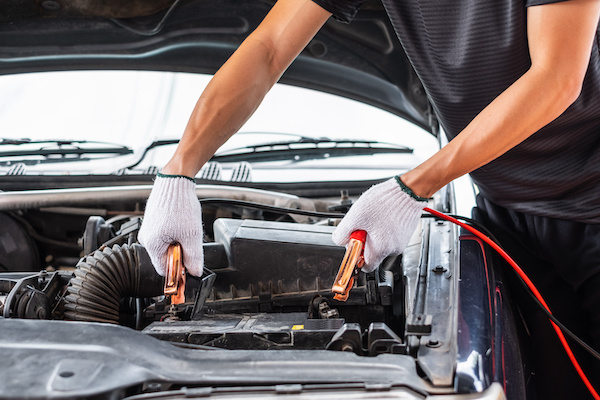Posted on 2/17/2023

Jump-starting a car is a useful skill to have in case your vehicle's battery dies or you find someone that needs help. If you don't know the correct way of jump-starting a vehicle, you are in the right place - it's simple but you have to keep a few things in mind. Follow these steps to safely and effectively jump-start a car: Step 1: Get the Right Equipment You will need a set of jumper cables and a second vehicle with a working battery. Make sure the batteries have the same voltage (usually 12 volts). Step 2: Position the Vehicles Park the second vehicle close enough to the dead vehicle so that the jumper cables can reach both batteries but not so close that the vehicles are touching. Make sure both cars are in park or neutral and the parking brake is engaged. Step 3: Connect the Cables Connect the red cable to the positive (+) terminal on the dead battery, then connect the other end of the red cable to the positive terminal on the working battery. Next, connect the ... read more
Posted on 1/30/2023
.jpeg)
If you’ve ever seen a dark puddle pooling underneath your parked car, don’t take it lightly or move on from it. There’s a good chance that it is your engine oil leaking from your car. Oil leaks are quite easy to spot, and they can cause major engine damage if left unnoticed. When you have an oil leak, there is no better place to bring your car than Bud’s Auto Repair and Transmission. How Oil Leaks Happen Oil leaks can happen for a number of reasons. They include – Damaged Oil Pan - The oil pan can be found underneath most cars. You should take care of your undercarriage because driving on rough terrain can wear and tear your oil pan. If something strikes the pan hard enough, it can cause oil to seep out. Worn Drain Plug - The drain plug is a part of the oil pan, and it is used to get rid of all the old oil before adding new motor oil to your car. The plug can get worn over time and even break, causing oil to leak out ... read more